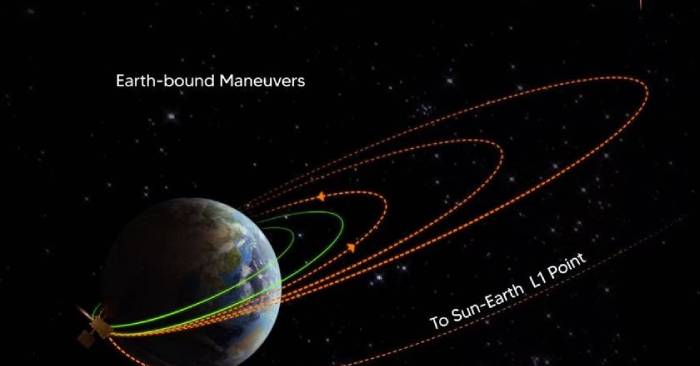Aditya-L1 Embarks on Sun Study Mission After Earth Orbit Phase

The Aditya-L1 spacecraft, India’s pioneering mission to explore the Sun, has initiated a key manoeuvre, marking its departure from Earth’s orbit. After orbiting Earth since its September 2 launch, the Trans-Lagrangian Point 1 Insertion manoeuvre sets Aditya-L1 on a course towards the Sun-Earth L1 point. This milestone positions the spacecraft to enter an orbit around L1 following an approximately 110-day journey.
Notably, this marks the fifth consecutive successful celestial transfer mission by the Indian Space Research Organisation (ISRO). Aditya-L1, serving as India’s first space-based solar observatory, will study the Sun’s outer atmosphere. Positioned approximately 1.5 million km from Earth at the L1 Lagrange point, it will provide vital insights into solar activities and their effects on space weather in real time.
Throughout its journey, Aditya-L1 underwent four Earth-bound manoeuvres to gain the required velocity for its transit to L1. Upon reaching the L1 point, another manoeuvre will lock it into an orbit around L1, where it will continuously observe the Sun without the interruption of occultations or eclipses. This strategic placement offers a unique vantage point for studying solar dynamics and space weather.
The spacecraft carries seven scientific payloads developed by ISRO and national research laboratories, enabling observations of the photosphere, chromosphere, and the solar corona, as well as in-situ studies of particles and fields at L1. These instruments will provide essential data on various solar phenomena, including coronal heating, coronal mass ejections, and space weather dynamics.
The Aditya-L1 mission holds immense potential to advance our understanding of the Sun and its impact on our solar system’s environment, offering a new era of solar science research for India.






